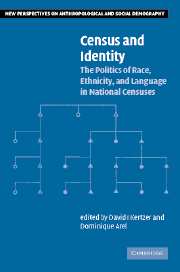Tale of a ‘Seditionist’–The Lawrence Dennis Story
AntiWar.com
2000-04-29
Justin Raimondo
War infects and weakens our republican form of government, spreads social and political diseases throughout the body politic—but is, as Randolph Bourne put it, “the health of the State.” The State, in wartime, is glorified and empowered: the militarization of society means that all resources are mobilized and placed at the disposal of government, and all dissent, however meek and mild, must be utterly discredited if not entirely snuffed out. In wartime the benevolent mask of the “democratic” state invariably slips, and the true face of repression is revealed in all its leering ugliness…
…WORLD WAR II AND THE HIGH ART OF DEMONIZATION
The infamous Moscow Trials of the 1930s, staged by Stalin to cement his hold on absolute power, were the model for the effort undertaken by the US government during the war years to not only discredit its opponents but also to jail them, if at all possible. The massive roundup of Japanese, German, and Italian-Americans was a corollary to the relentless propaganda campaign that singled them out as a “fifth column” coiled and ready to strike. This massive smear campaign was also directed at the large and combative antiwar movement of the time, the America First Committee, as well as its leading spokesmen: Charles A. Lindbergh, John T. Flynn, and “isolationists” in every walk of life were singled out by the War Party and viciously attacked—and this was true especially in the arts, from the actress Lillian Gish to the poet Robinson Jeffers, and in publishing, where the editorial staffs of the major American newspapers and magazines were purged of virtually all “isolationists.” When war finally came, the War Party took its terrible revenge on all who had held out the hope of peace—and none suffered more than Lawrence Dennis, who has yet to finally receive the honor that is his due.
THE OUTSIDER
Lawrence Dennis was an outsider in a movement of outsiders, a unique and largely solitary figure whose career as a writer and notorious “seditionist” embodies the tragedy and bravery of the Old Right, the pre-World War II “America First” generation of conservative intellectuals and activists. In many important ways, Dennis is the prototype of modern “paleo-conservatives.” His career as a controversialist and the leading American nationalist intellectual of his time charts the rise and fall of the Old Right – and, perhaps, holds a lesson for us today. Born in Atlanta in 1893, Dennis had what historian Justus Doenecke describes as “a varied career,” which included a stint as a “boy evangelist.” A recent article on Dennis in The Baffler—in which the author, transcending his own leftist politics, seems to appreciate if not fully understand his subject—informs us that he was born Lonnie Lawrence Dennis, adopted by a mulatto couple, and was undoubtedly of mixed race: his mother was black, but his father was in all probability white. To say that young Lonnie was a precocious kid is a definite understatement: by the age of five he was preaching before large audiences in Atlanta, and was soon bringing the Word to congregations around the country as “The Mulatto Boy Evangelist,” and taking his road show as far as England. He published his autobiography at the ripe old age of ten.
…THE BLACKEST IRONY
For Dennis to be anointed leader of a racist fifth column in America was just another irony in a life rich with them. For a supposed fellow-traveler of Hitler, Dennis hardly fit the Aryan mold. Charles A. Lindbergh, for whom Dennis is said to have written a few speeches, described him as having a “rugged,” dark-complexioned look that made him seem as if he would be more “at home at a frontier trading post.” Dennis’s archenemy, the notorious agent provocateur John Roy Carlson, noted that “Dennis’ hair is woolly, dark and kinky. The texture of his skin is unusually dark and the eyes of Hitler’s intellectual keynoter of ‘Aryanism’ are a rich deep brown, his lips fleshy.” This is the measure of what Lawrence had to endure: the man Life magazine called, in a picture caption, “America’s No. 1 intellectual Fascist . . . brain-truster for the forces of appeasement” and Hitler’s alleged pawn was almost certainly an African-American….
Read the entire article here.

